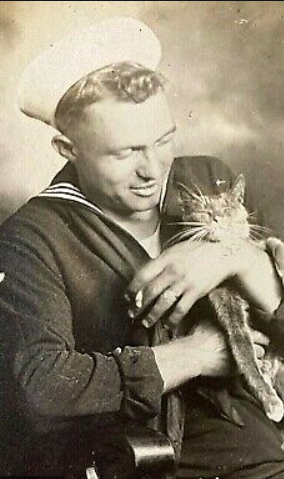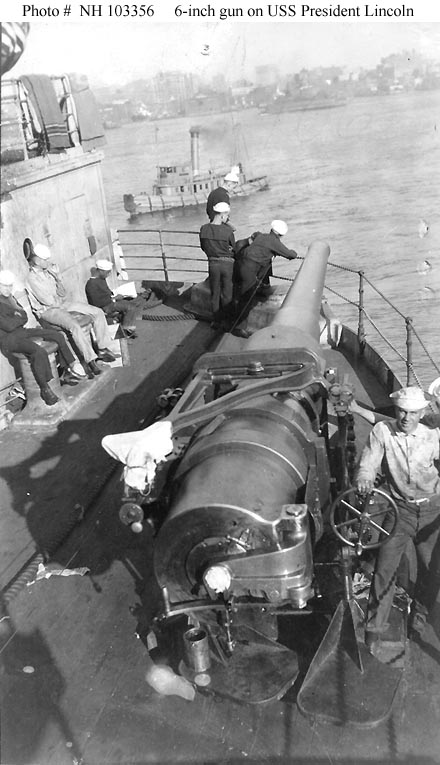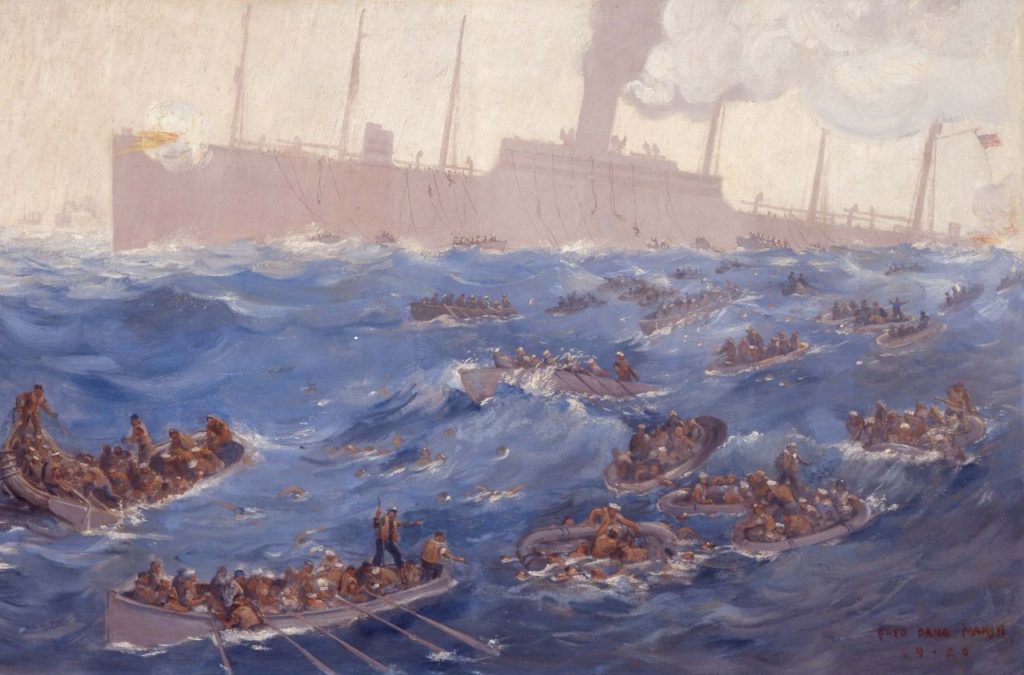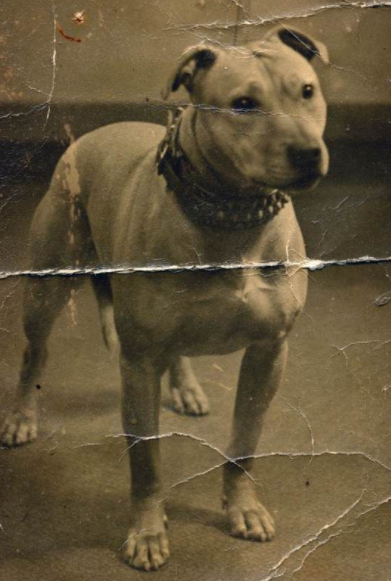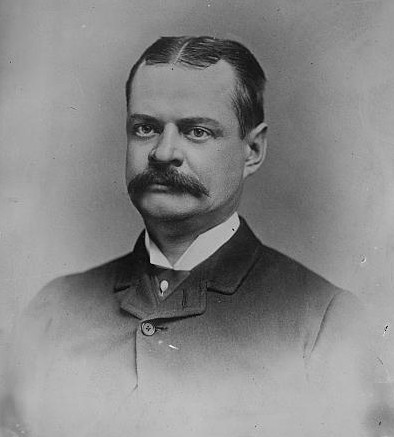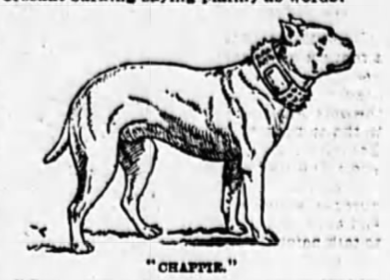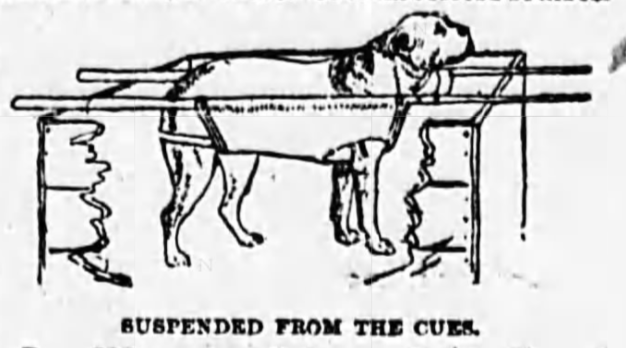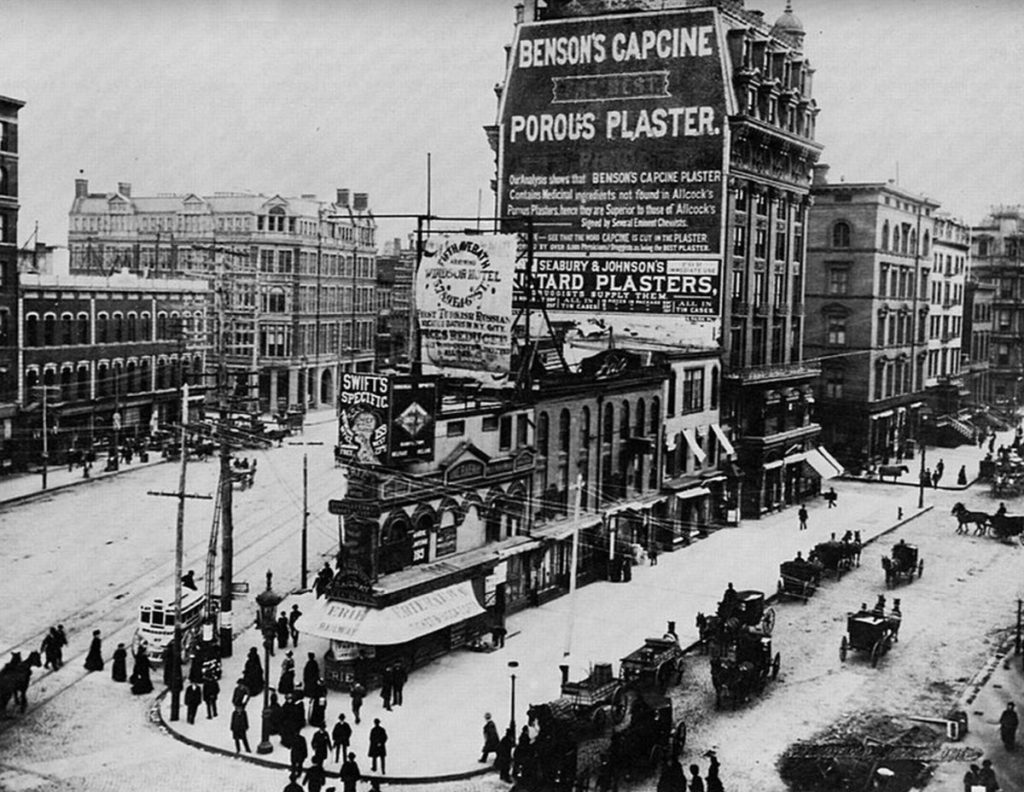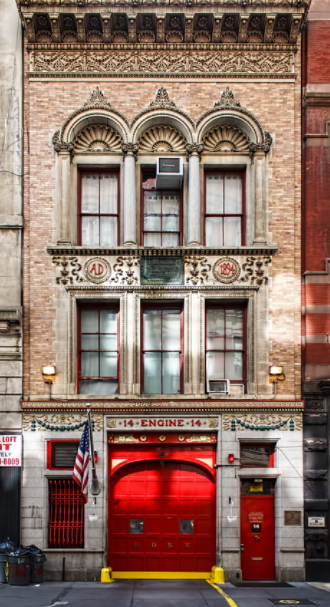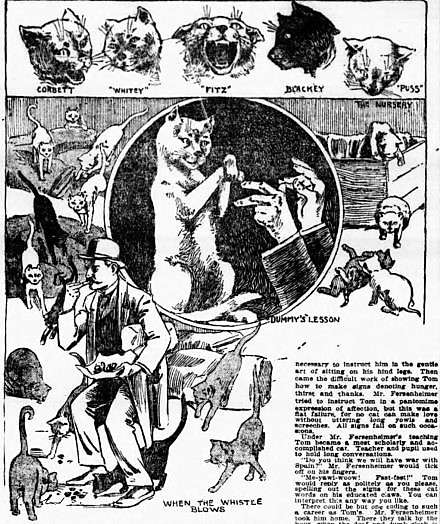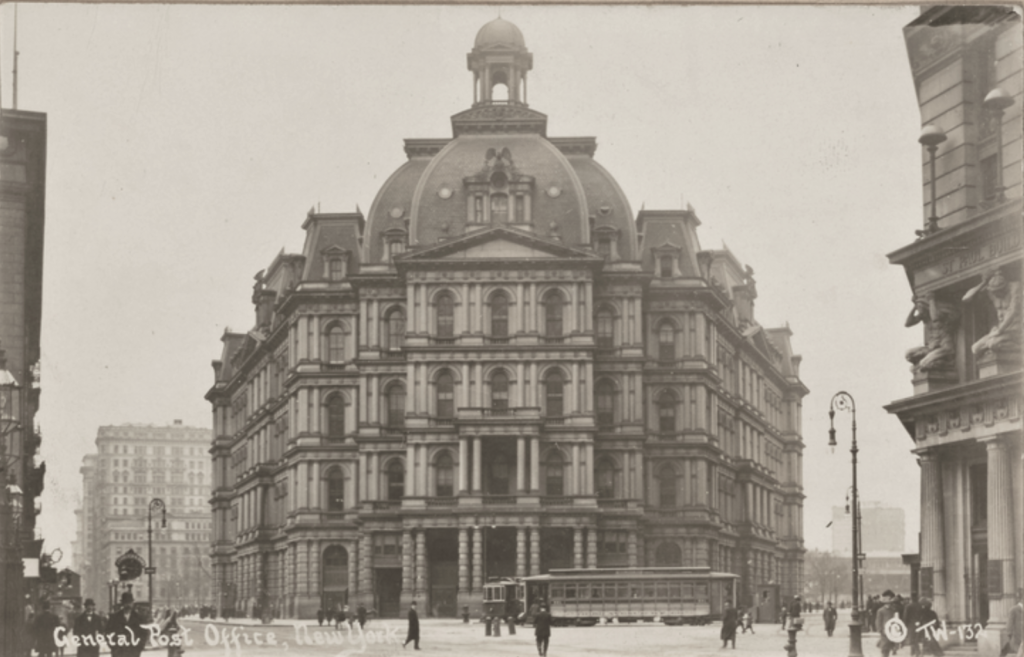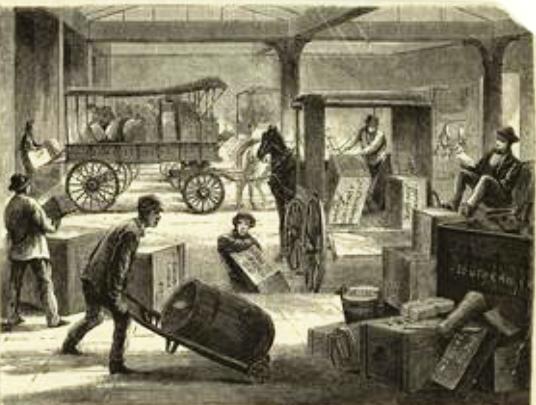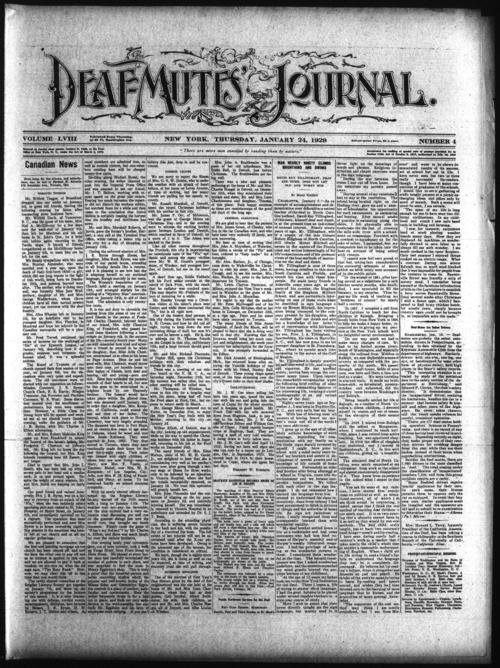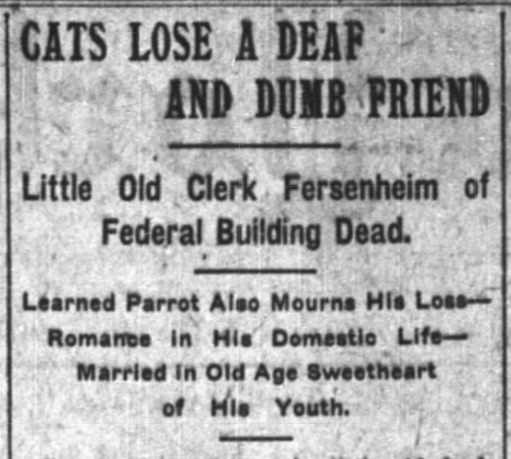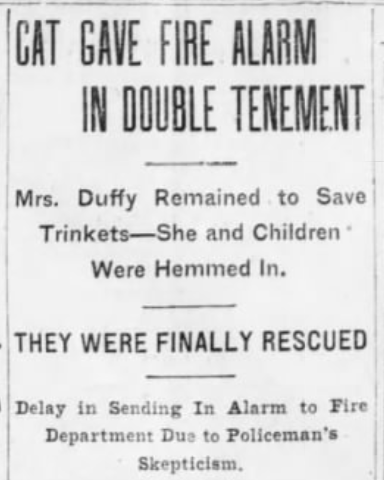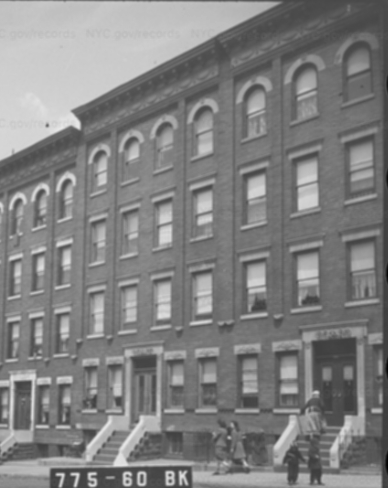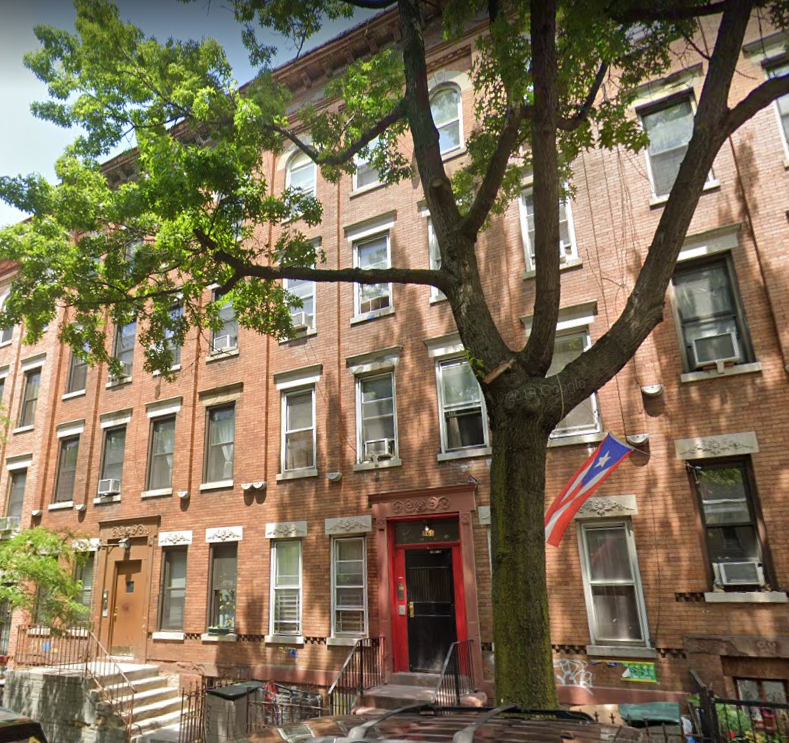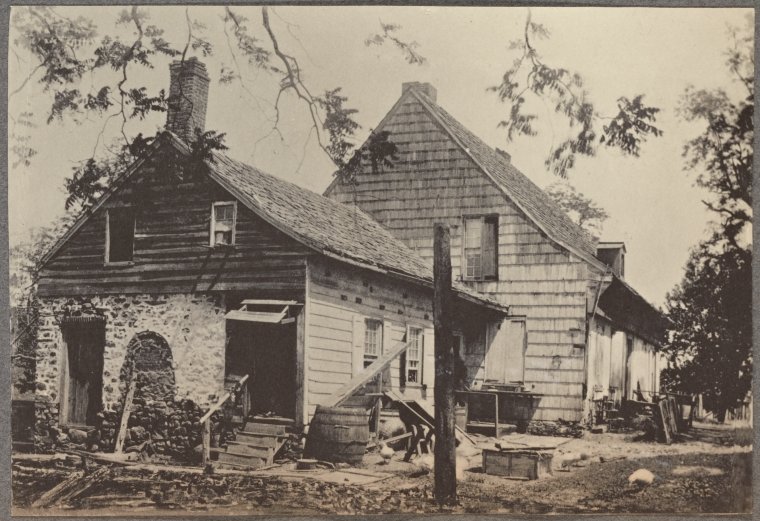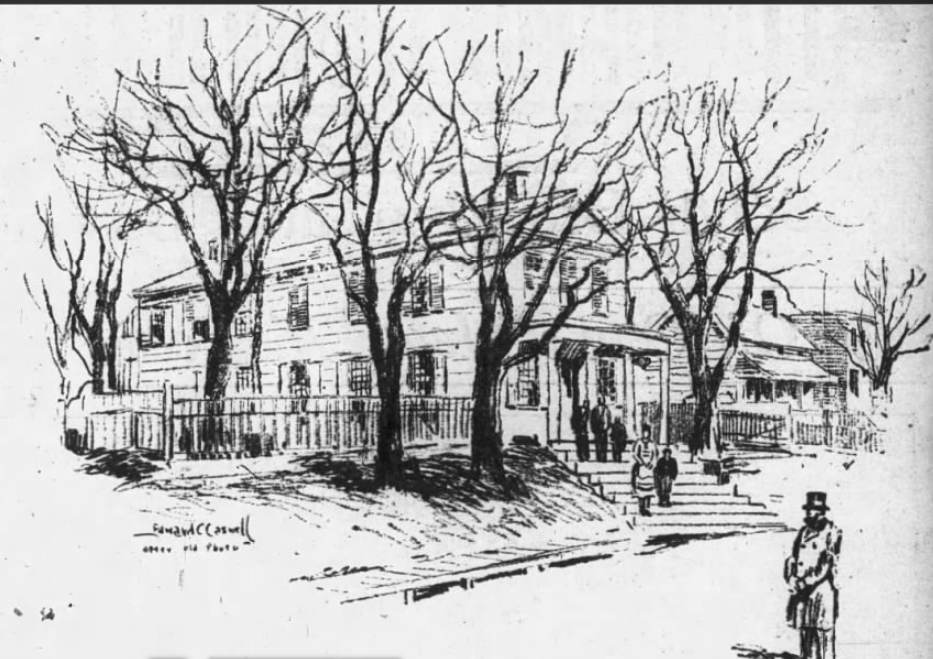When I first set out to write a new animal tale of Old New York this week, I didn’t expect to be telling the story of a Draft Riots heroine.
I originally wanted to tell a story that took place in history during the week of Thanksgiving. After discovering the following story of Elizabeth Gallagher and her animal companions, I thought I had found a short but sweet–albeit sorrowful–tale of a lonely woman and her chickens, cat, and bird.
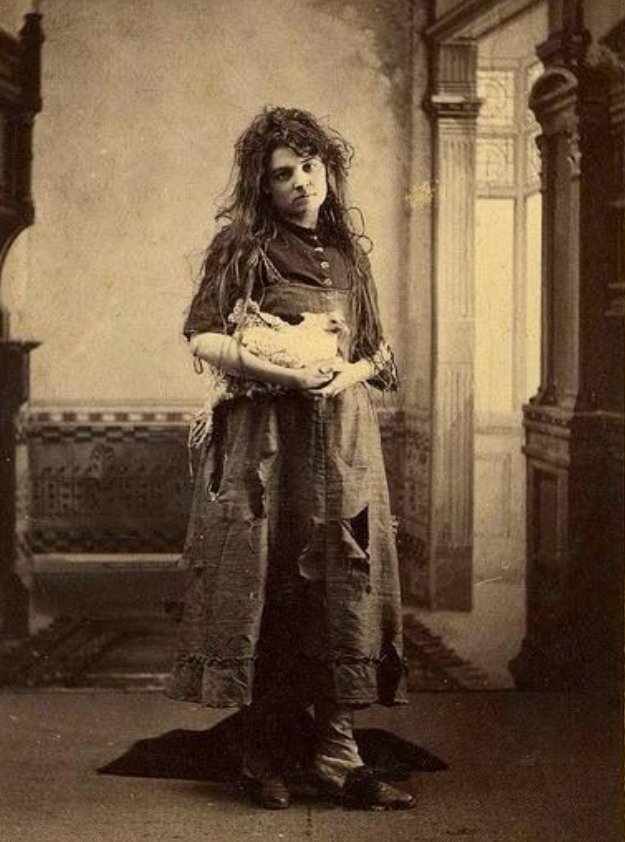
But after I did some more research, I found an amazing story that not only took place during two Thanksgiving weeks in two different centuries, but also featured a very relevant tale set during one of New York City’s most historic events. What started out as a sorrowful animal tale turned into a short history lesson and wonderful story of the true meaning of Thanksgiving.
The Eccentric Spinster
Elizabeth Gallagher was a lonely woman who worked as a laundress doing washing and scrubbing. Although she was only about 57 in 1899, the newspapers described her as an old and eccentric spinster.
Elizabeth was born in Farmington, Connecticut. She came to New York as a young girl in 1850.
For 36 years–ever since her first home in New York City burned down in 1863–Eliza lived on the third floor of a four-story brick tenement building with stores at 328 East 22nd Street. She shared her small suite of rooms with two chickens named Snowbird and Pearly Dew, an unnamed cat, and an old bird. These animals were her only companions.
On November 22, 1899, three days before Thanksgiving that year, Policeman Golden of the East Twenty-Second Street police station arrested Miss Gallagher. Her crime was keeping in her rooms two chickens that she had raised since they were three-day-old chicks.
That day, Magistrate Henry A. Brann of the Yorkville Police Court held her on $100 bail for violating the rules of Section 79 of the Sanitary Code.
“Don’t be a Shylock, Judge,” Elizabeth told the magistrate. “I thought I had a right to have chickens in my room. Why, I talk to Snowbird and Pearly Dew as I would to children. They are my companions. I have as much a right to have chickens in my room as the Artists’ Club has to have monkeys in its room. I love animals. I don’t want to see any killed. Chickens are not worse than pug dogs.”
Although Magistrate Brann sympathized with her, he said the matter would have to be addressed in the higher courts.

So, two days before Thanksgiving, Miss Gallagher was arraigned before Justice E.A. Jacob in Special Sessions. “Sentence suspended!” he ruled.
It was great that Elizabeth was cleared of the charge, but the courts still took away her animals. As neighbors gathered around to hear her story when she returned home, here’s what she told a reporter from the New York World:
“I had tried to be the friend of every living thing. I hope I’m not doing wrong. I saw the poor little chicks in the market one day last summer and I felt so sorry for them that I bought a pair and took them home with me. I kept them so clean—they were such a comfort to me here in my little home! I gave them air in a coop on the fire escape.
People who have their friends with them don’t know how it is to live always alone. The little chickens and the cat and bird were all I had for comfort. But they’ve taken the chickens and cat away from me and now the bird is dead. But I’ve got my flowers left—oh, do you think they will let me keep them?”
The Heroine of the Draft Riots
I thought the story ended here. But fast-forward to November 1904, when the world–or at least America–learned about a woman named Elizabeth Gallagher who had helped save four policemen during the infamous Draft Riots of 1863, the most violent insurrection in American history.

According to the story, which was published in numerous newspapers across the country, on November 26, 1904–just two days after Thanksgiving–Elizabeth was evicted from her home on East 22nd Street.
She had been faithfully paying $12 a month for her rooms, but after taking ill, she was unable to pay her rent and buy food. It was either starve or miss a rent payment. The building’s janitor, Adam Schopp, had her evicted.
Elizabeth went out into the streets to beg for money. When she came home, all her belongings, including an old rocking chair and a rubber plant, were piled up on the sidewalk. She sat down on her rocker in the gutter and had a good cry.
Just then, Captain Gallagher of the East 22nd Street police station came by (the station was directly across the street from Elizabeth’s apartment building). As Elizabeth began to tell her story, the captain interrupted her and said, “Why, my name’s Gallagher too.” He told Elizabeth that he would make arrangements for her to stay in a hotel that evening.
But all of sudden, Captain Gallagher recalled the woman’s name. “I know you, Liz Gallagher,” he said, “and you’re coming right over to the station house for the night. The furniture will be alright. I’ll send an officer to see that nobody touches it. Now, come on, Lizzie. The police of this precinct owe you a good turn.”
Elizabeth asked the captain if her rubber plant could also spend the night indoors at the police station. She was very worried that it would freeze and die if left outside. And so Elizabeth, the old rocking chair, and the rubber plant had a home for the night.
“Boys, this is Lizzie Gallagher who helped some of the officers of this precinct to escape away back in the 63 draft riots when the mob wanted to kill them,” Captain Gallagher explained to his men. “She’s been dispossessed and we’re going to see her through.”

That night, Elizabeth woke up a few times to peak out the window to make sure her furniture was still there. When she checked one more time in the morning, the furniture was all gone. She told Captain Gallagher that all her meager belongings must have been stolen.
“No, they haven’t, Liz,” he told her. “It’s all upstairs, where it ought to be. Your rent’s paid, and all you’ve got to do is go up and light the stove and cook your breakfast.”
As it turns out, Captain Gallagher had asked his men to contribute to a fund for Elizabeth that would allow her to live her life in comfort. The policemen agreed to set up a fund that would pay her rent for the rest of her life.
The day after Elizabeth’s eviction, a reporter from The New York Times came to visit her at her apartment. She immediately apologized for the mess–she explained that the policemen didn’t know that the washstand which she used for her laundering work didn’t belong in the parlor.
She told the reporter that in 1863 she was living in an apartment at 329 East 22nd Street, which was next door to the East 22nd Street police station. When the draft rioters came down the street “howlin fir the blood av th’ p’lice,” she went to the police station to warn the men of their impending doom.
The mob, she said, had pillaged the gun factory on the northeast corner of 22nd Street and Second Avenue and turned the weapons on the police station. Most of the police officers had been sent downtown, so there were only a few young officers in the station.
“Boys, there’s goin’ to be murther done,” she said. She told the policemen to slip through the side door, where she had left some clothes for them to change into. “Dress yourselves anyway ye like, but fir yer own sakes git rid o’ them brass buttons.”
The gun factory Elizabeth was referring to was owned by New York City Mayor George Opdyke, who secretly produced carbines for use during the Civil War. The upper rooms were used as drill rooms by local militia, and thus, the factory was often referred to as an armory.
Much has been written about the Draft Riots, “the largest civil and most racially charged urban disturbance in American history.” In a nutshell, the event was a protest-turned-race riot sparked in part by white working-class men (mostly Irish immigrants) who both feared the freed slaves who would now be competing for their jobs and resented the wealthier men who could afford to dodge the war draft by paying a $300 fee to hire a substitute.
On the first day of the five-day protest, the mob attempted to storm the main entrance of the gun factory. Using an improvised battering ram, they splintered the doors and smashed them open.
The Metropolitan police trying to hold down the fort, so to speak, used their revolvers, shooting several rioters. But the small contingency of policemen was no match for the large mob, and so the police were ordered to abandon the armory. The rioters made off with about 1,000 weapons before setting the building on fire.

The gun factory reportedly went up like a torch, trapping several rioters on the top floors. Although volunteer firemen from Lafayette Engine Company No. 19 tried to extinguish the flames, the mob threatened to stone them if they tried to put out the fire. Thirteen people died—two were shot, 8 died of burns, and a few were killed when jumping from the upper floors to escape the flames.
As reported in The Armies of the Street: The New York City Draft Riots of 1863 (Adrian Cook, 1974), one young girl described the riots as follows:
“Thousands of infuriated creatures, yelling, screaming and swearing in the most frantic manner…bareheaded men, with red, swollen faces, brandishing sticks and clubs, or carrying heavy poles and beams; and boys, women and children hurrying on and joining them in this mad chase up the avenue like a company of raging fiends.”
After the rioters took down the gun factory, they made their way down East 22nd Street toward the police station of the Eighteenth Precinct. According to the New York City Police Museum, the Command Log entry for July 14, 1863, noted that the fire and destruction of the station house began at 8 p.m., when a mob of rioters demolished the windows and doors with stones, after which they set fire to the building. The only articles saved were the blotter, time book, telegraph book, and nativity book.
The four young policemen still in the building had to pry the iron bars from a cell window to escape. Two boys were killed when the walls of the police station fell on them: Terrence Boyle, age 16, and John Kennedy, age 9.
The flames extended to the adjacent fire bell tower and to the house of Engine Company No. 51. The apartment building on the other side, where Elizabeth Gallagher was living, was also destroyed in the blaze.
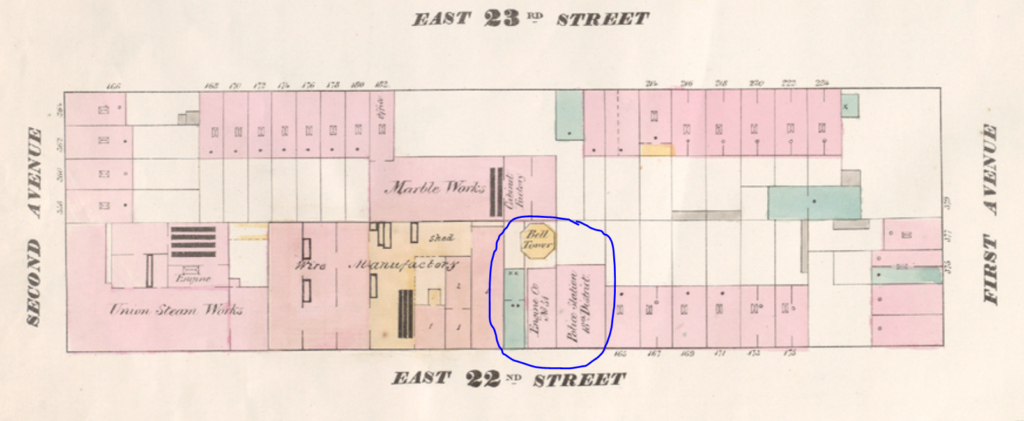
According to The Sun, Elizabeth did more than just offer the policemen a change of clothes: she reportedly met the mob with kettles of boiling water. Then she went and stood on the stoop of the police station and addressed the crowd.
She told the crowd that they should leave the police alone. “It wasn’t their fault that they were p’licemen,” she said, “and most likely the boys was mightly sorry they was p’licemen just then.” She was able to talk long enough for the men to change their clothes and escape.
The crowd then set fire to her building, which, she explained to a reporter, is how she came to living across the street at 328 East 22nd Street.
“I’ve known every mother’s son of them in this precinct for forth years, and they never called me anything but Mother Gallagher since I tried to keep the mob from burning the station house in the draft riots,” Elizabeth told the news reporters. “I didn’t succeed then, but I showed the boys that I loved ‘em. Now that they have kept me from going to the poorhouse in my old age, I look on them as the most loving sons a mother could wish for.”
Even forty years after the Draft Riots, the men of the East 22nd Street police station were still thankful for Elizabeth’s good deeds. And Elizabeth could give thanks to the men for saving her home and providing her with a family she never had before.
The End of the Story

Estimates vary greatly as to how many people were killed in the Draft Riots, but most historians believe around 115 people lost their lives, including about 12 Black men who were lynched after being brutally beaten. Only 67 people were convicted for their role in the riots, however, and none received significant jail sentences. History does indeed repeat itself.
Shortly after the Draft Riots, a new police station was constructed on East 22nd Street. The station closed in 1914, and for some years the building was used by a nonprofit as a group home for LGBTQ youth. In 2014, the building was purchased by Suzuki Capital for $11.5 million; the old police station was replaced with luxury condos called Gramercy Gates.
In 1921, Elizabeth’s tenement building at 328 East 22nd Street was sold for Franklin Burr to the John Clark Malone Realty Company. The property had been in the Burr family since 1860.
The tenement, along with several other neighboring buildings, was torn down and replaced with an automotive garage, pictured below in 1940, at 320-330 East 22nd Street. Today the site is occupied by a large, eight-story apartment building constructed in 1948.
In 1916, New York University purchased the apartment building for $87.5 million for its employees of NYU Langone Health. One pet (under 50 pounds) per apartment is permitted. I don’t think that includes chickens.



